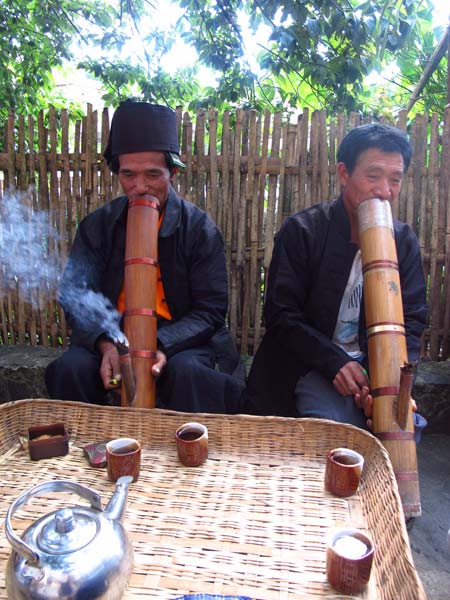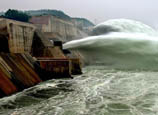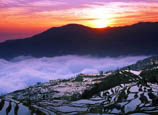
 |
| Bamboo water pipes are Hani men's favorites. (China Daily/Zhang Zixuan) |
The villages are built in the timberlands' lower fringes. The settlements are comprised of "mushroom houses", built of rammed earth, adobe bricks and stone with umbrella-shaped straw-thatched roofs.
The houses typically have three stories. The first is for livestock; the second is the living area and the top floor is for grain storage.
"The scenery before rice transplanting is like heaven for photographers," Yunnan's deputy governor Gao Feng says. "The terraces are full of water, which makes them appear as millions of mirrors reflecting the sun, clouds and sky."
From late April to late September, Hani people grow red rice, the terrace's dominant crop. Cattle and buffalo plow the terraces, and no chemical fertilizers are used.
Fish and ducks are also bred in the paddies, which improves fertility while providing food for people and animals.
The water from brooks, springs and rain is collected by the forests and distributed to the fields through a gravitational system of ditches, canals and bamboo pipes.
Artesian wells in the villages provide drinking water.
"The integrated four-element system plays the wetlands' role. It conserves moisture and soil, adjusts the climate and sustains biodiversity," says Xiong Zhengyi, director of the Yunnan cultural heritage bureau.
He adds that the terraces withstood the severe drought that has parched Yunnan for three years.
China began preparing the World Heritage application and domestic designations in 2000 to protect the world wonder.


















 6 golden pythons get new home at Chimelong Safari Park in Guangzhou
6 golden pythons get new home at Chimelong Safari Park in Guangzhou


![]()
